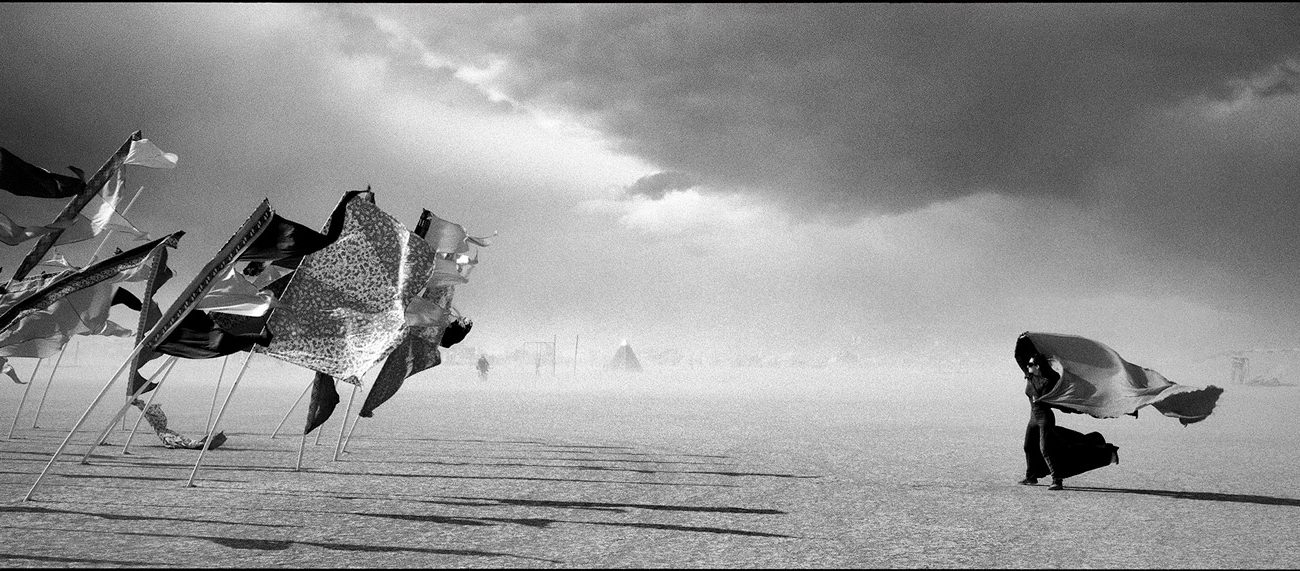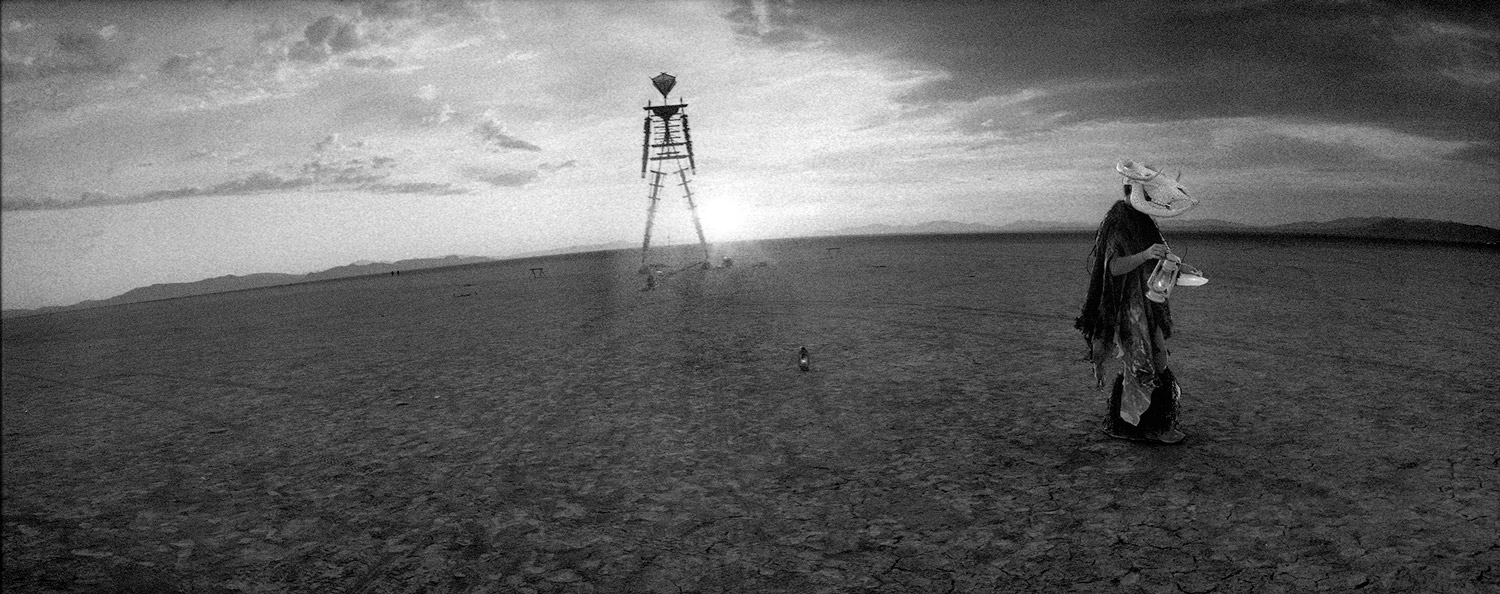When Stewart Harvey attended his first Burning Man in 1989, the event was still in its infancy. It was a private party on Baker Beach in San Francisco, attended by a few dozen people. They were mostly friends of Stewart’s brother Larry, along with assorted curiosity seekers who’d gathered informally to celebrate the summer solstice, and — ah, yes — to light a 30-foot wooden effigy on fire.
The following year Larry Harvey moved the gathering to northern Nevada over Labor Day, teaming with members of the Cacophony Society to create a DIY temporary autonomous zone in the desert. Black Rock City rose from the playa, word spread — and the rest was history.
The annual festival grew larger every year. 2019’s Burning Man attracted more than 78,000 people. (2020’s event was officially moved online due to pandemic concerns.)
For those not fortunate enough to attend Burning Man in the early years, the next best thing is at Emerald Art Center, where Stewart Harvey’s Photographs From Thirty Years Of Burning Man is on display through Sept. 25 in the upstairs gallery.
Harvey has plenty of pictures to choose from. He’s attended nearly every Burn since 1989, shooting prolifically at each festival to build a vast personal archive. Some have been featured in Wired and Life magazines, as well as in Harvey’s own book of Burning Man photos, 2017’s Playa Fire. The EAC show features 25 personal favorites.
Fresh off the stair landing, gallery-goers are greeted with a 1991 photo of Larry Harvey himself, smiling proudly in his trademark Stetson hat as the wooden figure behind him begins to catch fire. To its immediate right is a picture (“Burn Ignition,” 2009) hinting at the future. In this frame the effigy is a minor structure in the corner, stretching its hands over a surging cloud of flames. This pairing is the perfect entrée to the rest of the show, serving as metaphorical bookends. Larry Harvey is the origin, and the statue’s conflagration is every festival’s culmination.
Befitting the Burning Man ethos, the sequence of photos is random. There’s a solid selection from the early ’90s — my personal favorites — documenting sparse crowds and wide-open possibilities. But the years don’t stop there. Harvey samples a wide range up through 2016. Shown non-chronologically, the pictures eschew any timeline in favor of individual scenes and people.
We see some of the bewildering art forms created in situ, the playa’s colorfully costumed denizens and the physical challenges of harsh desert conditions. A photo of lamplighters raising their torches in the midst of a sandstorm is no walk in the park. Nor is a scene depicting a woman being blown by a gale, caught between tattered flags and a pitch-black storm cloud. Just another day in gritty paradise.
In the hands of other photographers, extremes of weather or behavior might dominate. But in Harvey’s world they’re just another visual element, adding flavor to scenes already caught on the border of human experience. Harvey stretches the boundaries further, literally, through the occasional use of a swing lens panoramic camera. Although most of his photos are straight monochrome, he occasionally mixes in infrared, darkening skies, bleaching skin and wreaking havoc on reality.
In short, Harvey is less concerned with reportage than the experimental spirit of Burners and their provocative constructions. “When I approach Burning Man,” explains his brief show statement, “I don’t think of it so much as documenting an event, but rather as trying to capture revealing moments between people at the nexus of art and community.” ν
Stewart Harvey: Thirty Years of Burning Man (sponsored by Photography At Oregon) runs through Sept. 25 at Emerald Art Center, 500 Main Street, Springfield. Hours 11 am to 4 pm Wednesday through Saturday. A closing reception will be held 5 to 7 pm Friday, Sept. 25. Masks and social distancing required.

